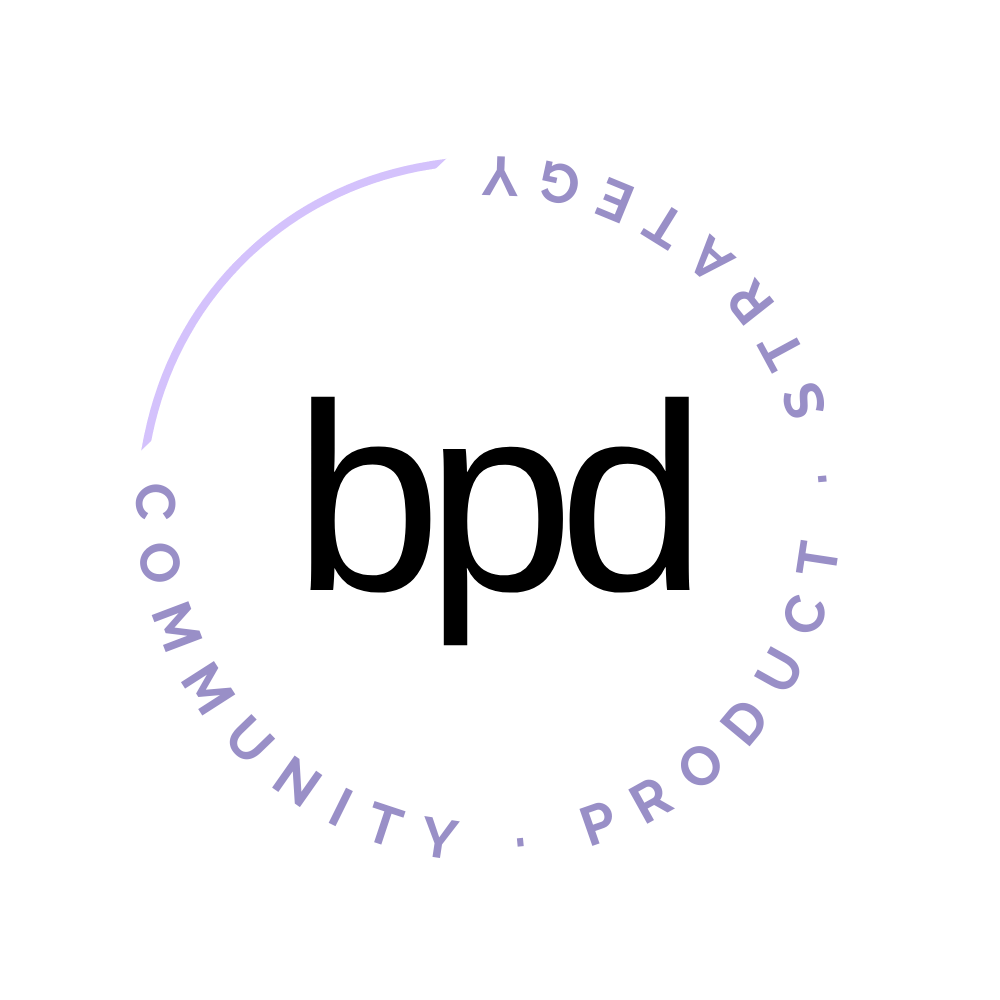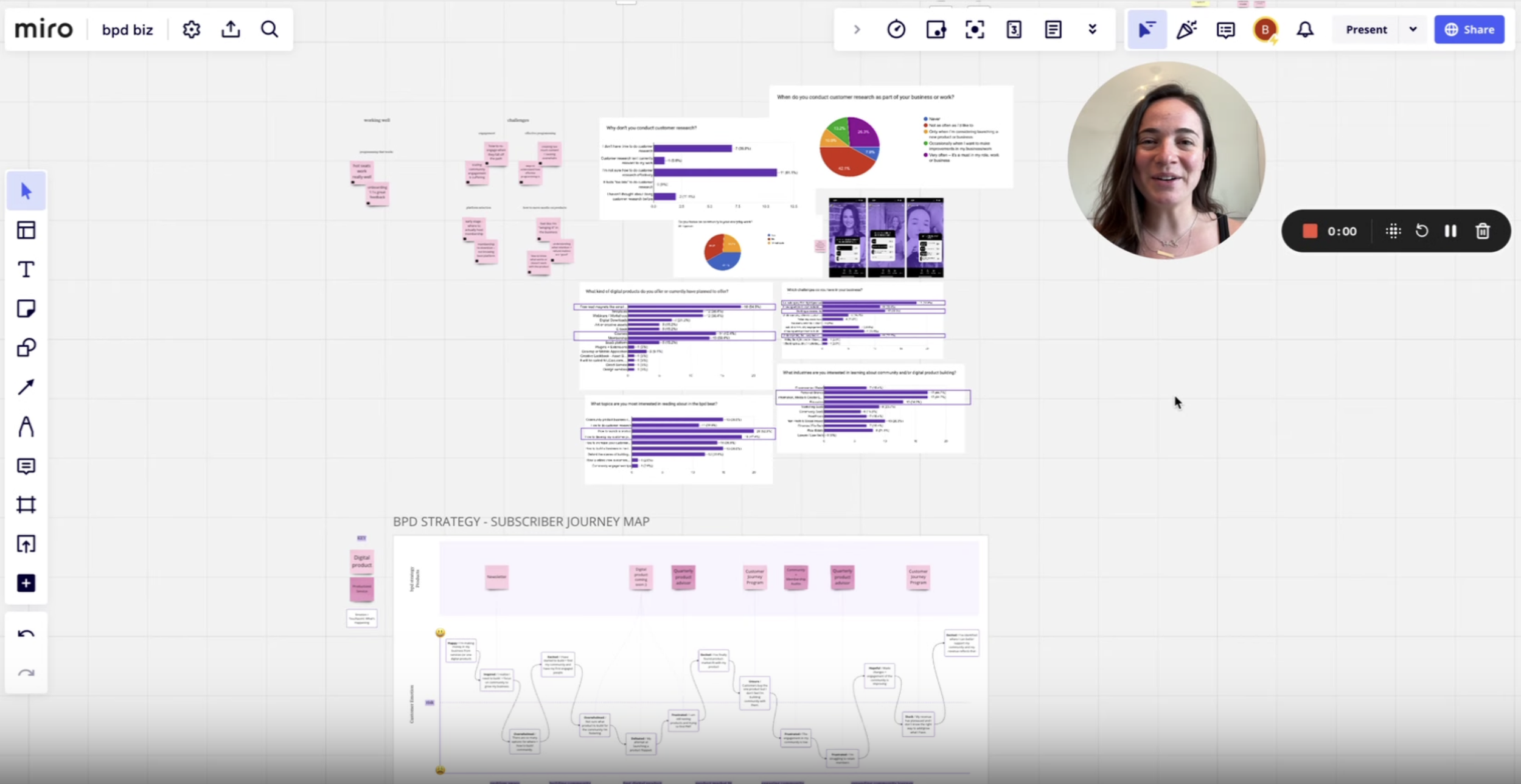#32 The Scrappy Research That Improved My Customer Journey
This week I was on a mastermind call when I shared my screen and showed how I analyzed my recent research and was able to reduce and streamline my service offers and products by ~75%.
Someone on the call told me he would have paid $50 to see my Miro board. And that's when I realized this might be a fun thing to share in the newsletter this week.
So today I'm linking a video for you to watch. It's a loom of me showing you bts of my research (you'll see the results of the survey I ran recently) – and how I used it to develop and simplify my own customer journey.
I recently ran a subscriber survey and have been doing some 1:1 chats with subscribers. I was really happy with the response rate – 20% of my list took my survey.
50% of survey respondents shared that they hardly ever do research. When I followed up asking for the reason it was twofold:
I'm not sure how to do it effectively
I don't have time to do it
People often get overwhelmed by research – How do I do this well? Where to start? How do I write a survey? When am I going to make time for this?
That's why I believe in scrappy research – just enough to get you the insights that give you clarity, and ultimately save you time and money.
If you do just a little scrappy research...
before writing the sales page you'll save time in revisions (and failed launches).
before deciding which product to build next you're more likely to build the most important thing (that people actually want).
after you put a sales page or product together by testing it with a few people, you'll increase your revenue (you work out the kinks faster).
I've talked about this theory quite a bit so today I want to give you a behind the scenes look at how I recently did this for my business.
In this video I share:
The results of my recent subscriber survey and 1:1 convos
How I analyzed those results to refine my offers
A walk through of my subscriber (that's you!) customer journey
If you give this a watch I'd love to know what questions you still have and if you found it helpful! What did it bring up for you?
I think about customer journey maps differently than the way they are traditionally created. I approach it from the emotional state of your customer – this comes from my UX research days.
What do you think about this method versus the customer journey maps you've seen before? Reach out and let me know!
If you loved this you can subscribe to the newsletter here.

